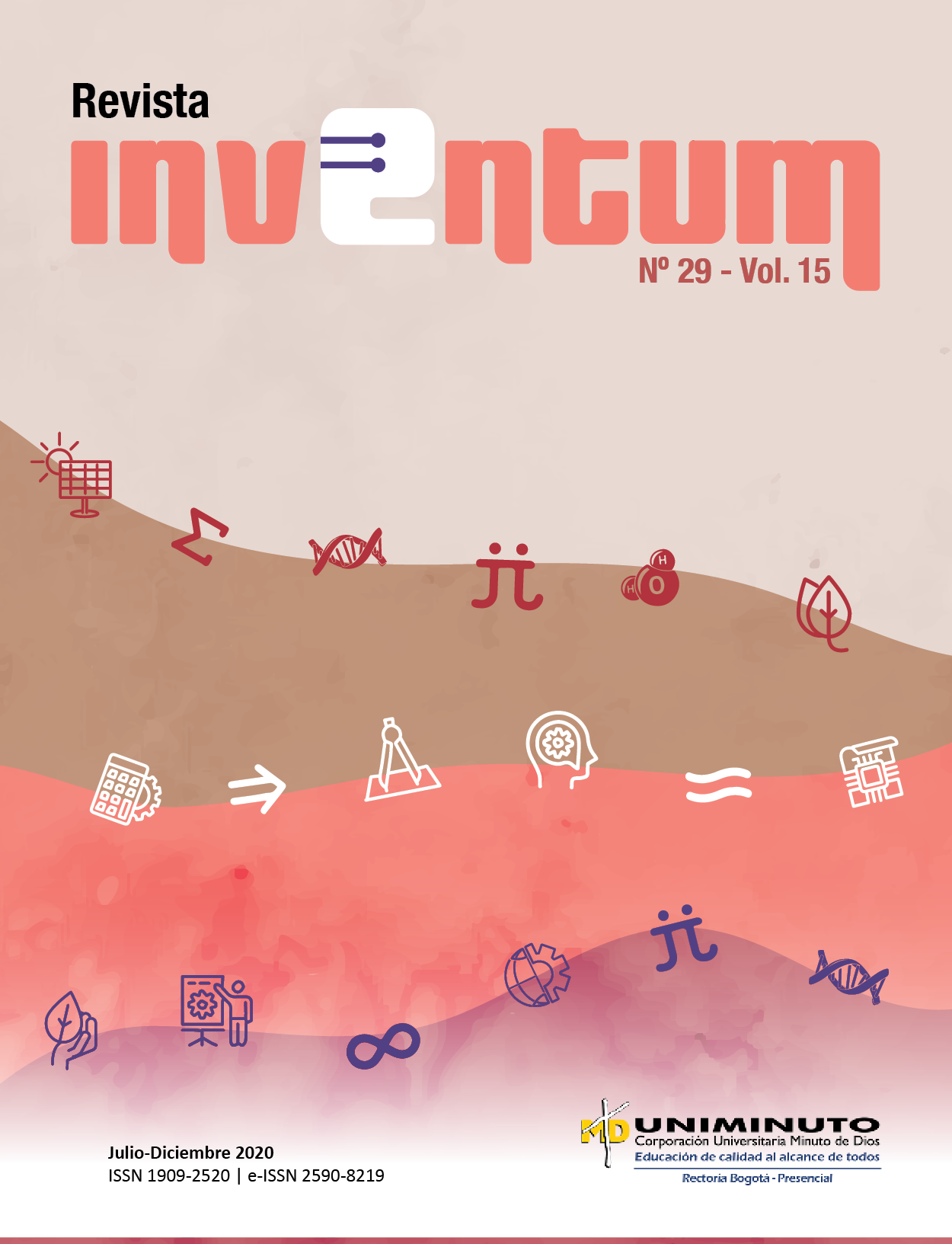Guide for the characterization and quantification of solid waste
Article Sidebar
How to Cite
Altmetrics
Article Details
Se solicita a los autores que diligencien el documento de cesión de derechos de autor sobre el artículo, para que sea posible su edición, publicación y distribución en cualquier medio y modalidad: medios electrónicos, CD ROM, impresos o cualquier otra forma, con fines exclusivamente científicos, educativos y culturales
- La obra pertenece a UNIMINUTO.
- Dada la naturaleza de UNIMINUTO como Institución de Educación Superior, con un modelo universitario innovador para ofrecer Educación de alta calidad, de fácil acceso, integral y flexible; para formar profesionales altamente competentes, éticamente responsables y líderes de procesos de transformación social, EL CEDENTE ha decidido ceder los derechos patrimoniales de su OBRA, que adelante se detalla para que sea explotado por ésta
- El querer de EL CEDENTE es ceder a título gratuito los derechos patrimoniales de la OBRA a UNIMINUTO con fines académicos.
Main Article Content
Abstract
The characterization of solid waste is an important basic stage in the management of solid waste, because it seeks to identify the sources, quantities and variations over time, as well as to observe the quality of the waste generated. The problem is that there are very few methods only to characterize municipal and urban solid waste, which are also difficult to carry out. Therefore, it is proposed that this guide presents a method to characterize and quantify in a simpler and more effective way not only municipal and urban solid waste, but also institutional, commercial and even farm waste, i.e. to know the individual components that constitute the flow of waste, usually based on percentage by weight.
Once the distribution of the components is known, they are quantified in order to obtain the production per person, also called per capita production (ppc) whose units are Kg/hb.day. Per capita production is particularly stratified in America, so that the higher the socioeconomic stratum of a country, municipality or neighborhood, the greater the waste generation. In Colombia, the capital cities have 6 strata, and the municipalities generally 3, being the 1 the lowest. It is concluded that for the quantitative method presented in this guide, when the result of the ppc obtained by calculations coincides with the ppc of the actual stratum in which the work is being worked, it confirms that the quantification was well realized and therefore the characterization is also correct.
References
[2] M. Cabeza Díaz, “Riesgo climático y definición de estrategias financieras para su mitigación en el sector agua y saneamiento en ALC: Residuos sólidos: Visión de la gestión de los desechos sólidos ante el cambio climático”, Banco Interamericando de Desarrollo, 2020. [En línea]. Disponible en: http://dx.doi.org/10.18235/0002751. [Accedido: 30-agosto-2020].
[3] Organización Panamericana de la Salud, “OPS/CEPIS/04/IT-634 Anexo 2 guía para caracterización de residuos sólidos domiciliarios”. [En línea]. Disponible en: https://docplayer.es/20690705-Ops-cepis-04-it-634-original-espanol-pagina-59-anexo-
2-guia-para-caracterizacion-de-residuossolidos-domiciliarios.html. [Accedido: 12-marzo-2020].
[4] K. Sakurai, “Plan de Gestión ambiental de los residuos sólidos urbanos de la ciudad de Reque”, 1982. [En línea]. Disponible en: sidalc.net. [Accedido: 20-enero-2020].
[5] Secretaría de Desarrollo Urbano y Ecología, “NMX-AA-015-1985 Protección al ambiente - contaminación del suelo - residuos sólidos municipales - muestreo - método de cuarteo”, 1985. [En línea]. Disponible en: http://legismex.mty.itesm.mx/normas/aa/aa015.pdf. [Accedido: 15-febrero-2020].
[6] R. y D. Secretaría Distrital de Cultura, “Listado de barrios por UPZ”, 2019. [En línea]. Disponible en: https://www.culturarecreacionydeporte.gov.co/sites/default/files/convocatorias_cartillas_y_anexos/listado_de_barrios_46.pdf. [Accedido: 15-febrero-2020].
[7] Ideca, “Barrio las Villas Sector Catastral, Bogotá D.C.”, 2020. [En línea]. Disponible en: https://mapas.bogota.gov.co/?l=654&e=-74.17375562306833,4.5682225959272875,-74.00896070119356,4.651123497981-397,4686&b=7256. [Accedido: 08-abril-2020].
[8] Secretaría Distrital de Planeación, “Estratificación Socioeconómica Urbana de la Localidad No. 11 Suba Decreto 394”, 2017. [En línea].
[9] E. Pamplona, Interviewee, Entrevista a conductor de camión recolector, Empresa Área Limpia. [Entrevista]. 2019.
[10] DANE, “Geoportal DANE información para todos”, [En línea]. Disponible en: https://geoportal.dane.gov.co/. [Accedido: 21-abril-2020].
[11] Secretaría Distrital de Planeación, “Proyecciones de población”. [En línea]. Disponible en: http://www.sdp.gov.co/gestion-estudios-estrategicos/estudiosmacro/proyecciones-de-poblacion. [Accedido: 19-diciembre-2019].
[12] Alcaldía Mayor de Bogotá D.C., “Decreto 548 de 18 de diciembre de 2015. Por el cual se adopta el Plan de Gestión Integral de Residuos Sólidos, PGIRS, del Distrito Capital, y se dictan otras disposiciones”, 2015. [En línea]. Disponible
en: http://legal.legis.com.co/document/Index?obra=legcol&document=legcol_e0c2a987d2f74be39559ef98869aefde.[Accedido: 10-mayo-2020].





